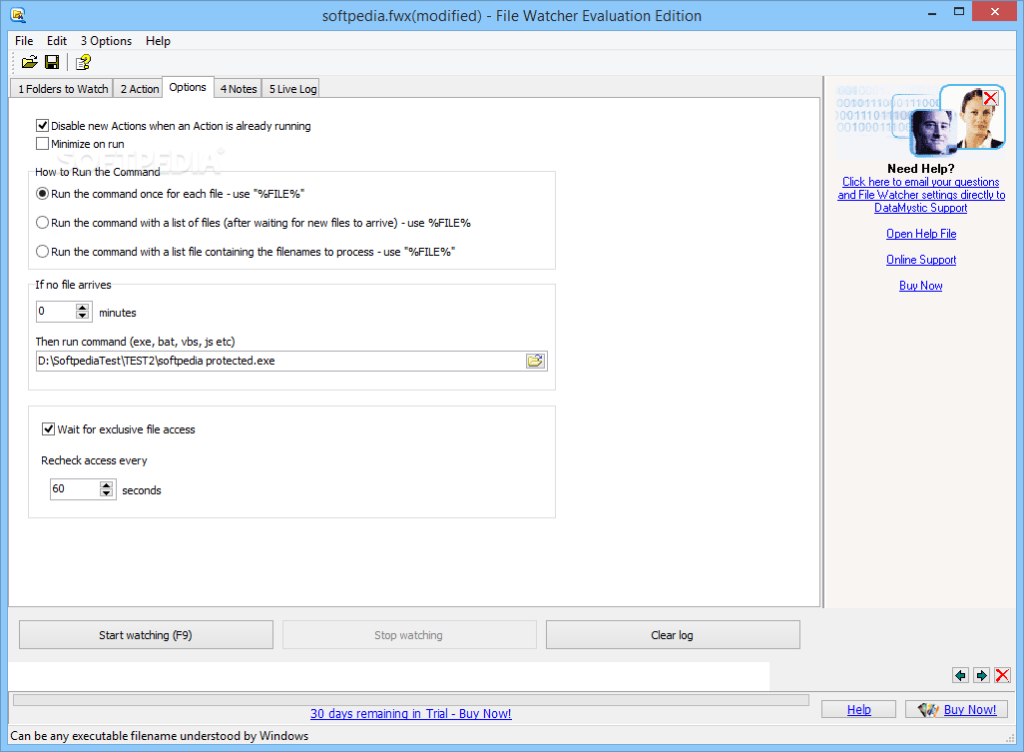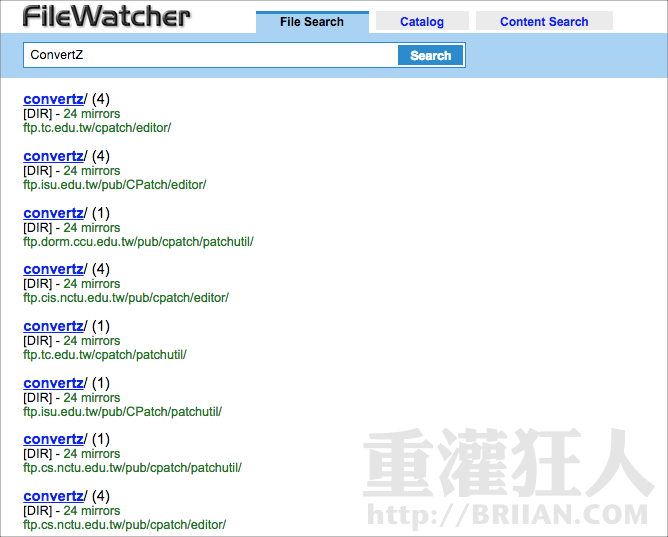
It contains a listview (just a "debug" tool for now - but great for learning the In's & out's of WPF+VB). The WPF app automatically fires up the Window1 class as the "startup window" - thats the default behavior when you create an WPF app in VS2008.
#FILEWATCHER DESIGN APPS HOW TO#
So I'm stuck, because Im not able to get the grasp on how to use the Dispatcher for WPF Window1 class, from the FileSystemWatcher. Sample using MsgBox or Console.Writeline - and not WPF UI.
#FILEWATCHER DESIGN APPS CODE#
My direct problem for now is that when the FileSystemWatcher detects a change, I have found no way of updating the ListView into showing the changes being added to the DataTable.Īnd if I try to the direct aproach - I run into problems with different threads.Īnd all the sample code / how to's on MSDN or the net seem to be either: Maintain a DataBase of the changes, just in memory for now - maybe later for SQL - depedning on the need. Created a FileWatcher class library to be extended later as the needs rises. Created a WPF application in VS2008, to serve as a interface and testbed for my results. Just an App for now - will extend into a WCF later with host & client when I get a grip on things. Create an app to serve as a platform for building a file-change detection, and replicate changes to another server. My goal is to create a mini framework for FileSystemWatcher which I can extend a bit further as the needs raise, aka the "FileTracker" project.

I'm in dire need of some help - trying to learn to write WPF, through VS2008 - VB9 and using FileSystemWatcher events. In this code, the FileSystemWatcher is listening only for a creation event however, other events are available, as well, such as Deleted and Renamed.(Im sorry if this thread appears as a duplicate/triplicate in the forum - the other(s) Post thread hung for me - not able to post)

/ Description of the type of files and folder location – / If TRUE: the file type and folder will be monitored / Arbitrary number (for instance 001, 002, and so on)

/ Unique identifier of the combination File type/folder. / folder to be monitored by the File System Watcher / This class defines an individual type of file and its associated Figure 1 shows the code that defines that class.įigure 1 Definition of the CustomFolderSettings Class /// The Structure of Customized Folder Settingsīecause I plan to deserialize the XML settings file into a well-structured C# class, the first component of the application must be the definition of the parameters FileSystemWatcher requires to operate.
#FILEWATCHER DESIGN APPS WINDOWS#
In this way, all the changes can be easily achieved simply by updating an XML file and restarting the Windows service.įor simplicity’s sake, I’m not going to explain the details about how to run this C# console application as a Windows service, but many resources are available online regarding this matter. In this article I explore how to write an application that uses the FileSystemWatcher class just once, but then, via XML serialization, allows further modifications to the application’s settings, such as folder names, file extensions and actions to be executed upon raising an event. Unless you’re sure your application will hardly ever change those settings, a better idea is to implement a mechanism that can change the configuration without modifying the source code. However, including those parameters in your source code isn’t a good approach because they won’t help when the application needs to include new folders and file extensions, which, moreover, will require coding, building and redeployment. This class is able to detect events in the file system, such as create, modify, or delete files and folders it’s fully customizable and its constructor accepts parameters like folder location and file extension to listen for, and a Boolean parameter to specify whether the listening process should work recursively through the folder structure. NET Framework since version 1.1, and according to its official definition ( bit.ly/2b8iOvQ), it “listens to the file system change notifications and raises events when a directory, or file in a directory, changes.” The FileSystemWatcher class is a very powerful tool that’s been a part of the Microsoft.

Volume 31 Number 10 Create a Customizable FileSystemWatcher Windows Service


 0 kommentar(er)
0 kommentar(er)
